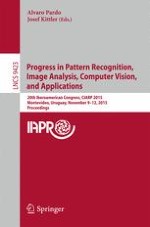2015 | Buch
Progress in Pattern Recognition, Image Analysis, Computer Vision, and Applications
20th Iberoamerican Congress, CIARP 2015, Montevideo, Uruguay, November 9-12, 2015, Proceedings
herausgegeben von: Alvaro Pardo, Josef Kittler
Verlag: Springer International Publishing
Buchreihe : Lecture Notes in Computer Science
